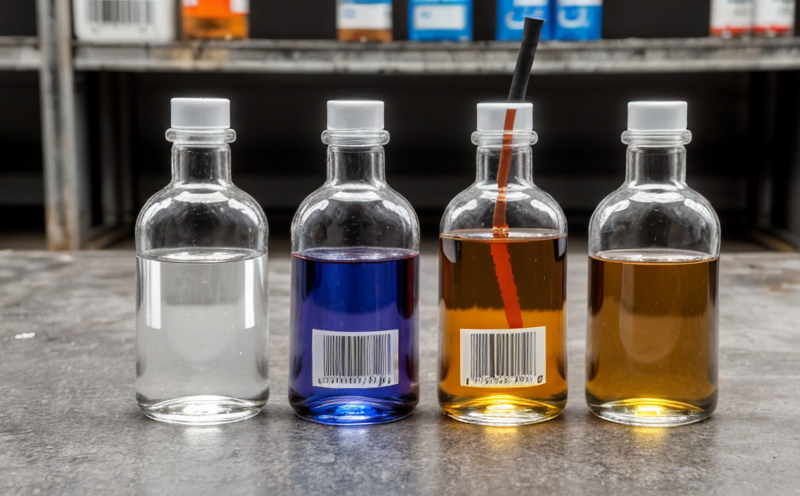ASTM D1414 Aging and Stability Testing of Rubber Products
The ASTM D1414 standard is a crucial tool in quality assurance programs aimed at ensuring that rubber products meet the required performance standards over their expected lifecycle. This method evaluates how well rubber products withstand environmental conditions such as heat, light, and ozone exposure. Compliance with this standard is mandatory for many industries where rubber components are critical, including automotive, aerospace, and construction.
The primary focus of ASTM D1414 is to assess the aging effects on rubber materials by exposing them to specific environmental factors that mimic real-world conditions. This testing process helps manufacturers identify potential issues early in the product development stage, ensuring durability and reliability throughout the product's lifecycle. The test involves several stages, each designed to simulate different types of stress that a rubber component might encounter.
The first phase typically includes accelerated aging under controlled temperature and humidity conditions. This step aims to replicate long-term exposure to heat and moisture that may occur during storage or use in hot climates. Following this initial stage, the samples are subjected to further tests aimed at evaluating their resistance against ultraviolet (UV) light and ozone. These elements can cause significant deterioration of rubber materials over time.
After undergoing these environmental stresses, the test specimens undergo a series of mechanical property measurements. These include tensile strength testing, which assesses how much force is required to break the sample; elongation at break, measuring how far the material stretches before fracturing; and hardness tests, evaluating changes in flexibility or stiffness caused by aging.
Compliance with ASTM D1414 ensures that rubber products are not only functional but also safe for end users. For instance, automotive tires must pass rigorous durability checks to ensure they can withstand years of wear without compromising safety. Similarly, seals used in manufacturing equipment need to maintain their integrity under harsh conditions, which this standard helps verify.
Additionally, ASTM D1414 provides a standardized approach that allows for consistent comparison between different batches or suppliers of raw materials, facilitating better supply chain management and quality control across industries.
| Industry | Application |
|---|---|
| Automotive | Testing tire durability under extreme conditions |
| Construction | Evaluating waterproofing membranes for long-term performance |
| Machinery Manufacturing | Assessing rubber seals in high-pressure systems |
| Aerospace | Ensuring spacecraft components endure space environments |
Quality and Reliability Assurance
The ASTM D1414 method plays a vital role in quality assurance by providing manufacturers with precise data on the aging behavior of rubber products. This information allows companies to make informed decisions about material selection, process optimization, and product design improvements. By understanding how various factors affect the performance of rubber materials, engineers can enhance product longevity and reliability.
One key aspect of this testing is its ability to identify potential weaknesses in manufacturing processes early on. For example, if a particular batch of raw rubber consistently fails certain aspects of the test, it could indicate problems with the production line or supply chain. Such insights enable companies to address issues promptly, thereby reducing costs associated with rework and waste.
Another benefit is improved communication between different departments within an organization. When everyone involved—from procurement to R&D—is aware of the standards being met through ASTM D1414 testing, there's greater alignment towards common goals such as enhancing product quality and customer satisfaction.
In summary, compliance with ASTM D1414 contributes significantly to both individual company performance metrics and industry-wide best practices. It fosters innovation by encouraging continuous improvement in manufacturing techniques while maintaining high standards of safety and efficacy.
Environmental and Sustainability Contributions
- Promotes the use of sustainable materials that withstand environmental stressors effectively
- Encourages recycling initiatives by ensuring products can be reused after aging tests
- Reduces waste through early identification of problematic batches or processes
- Supports circular economy principles by enhancing product lifecycle management
The ASTM D1414 testing process also contributes positively to environmental sustainability efforts. By identifying materials that perform well under adverse conditions, manufacturers can reduce the frequency of replacements needed during a product’s lifetime. This not only extends the useful life but also decreases overall resource consumption and waste generation.
Furthermore, successful completion of these tests supports recycling programs by demonstrating that rubber products remain stable even after exposure to harsh environments. Such stability ensures that recycled materials maintain their quality, making them suitable for new applications without compromising performance or safety standards.
The process also helps promote circular economy principles by encouraging companies to adopt lifecycle thinking in their designs and operations. By focusing on improving product durability and recyclability from the outset, organizations contribute to reducing landfill burdens while preserving valuable resources.





